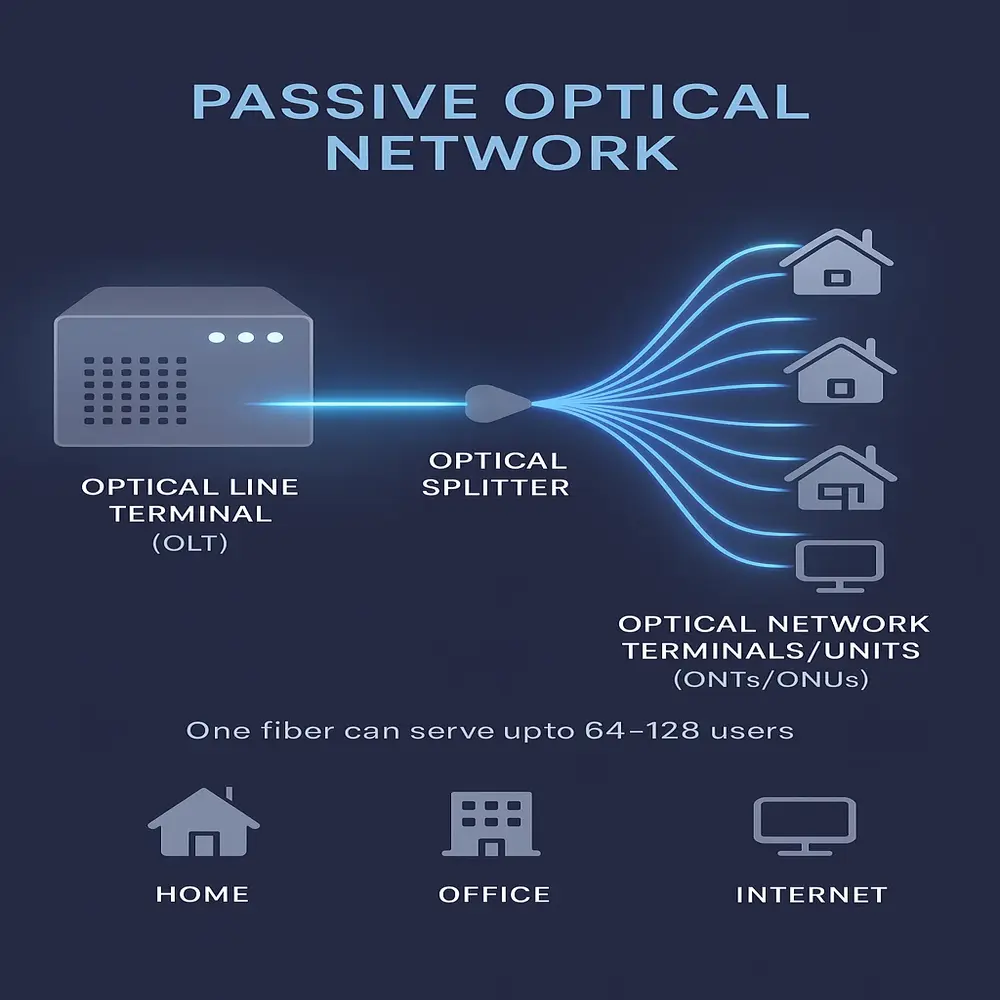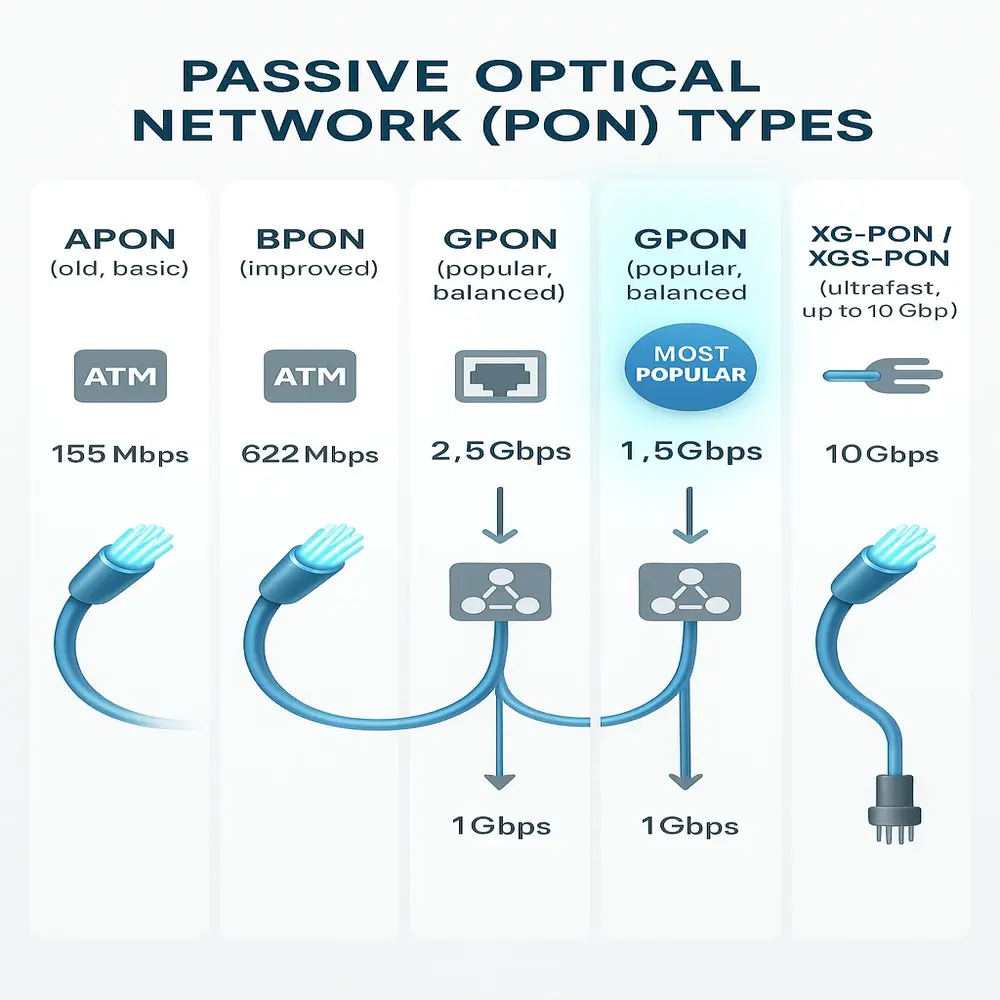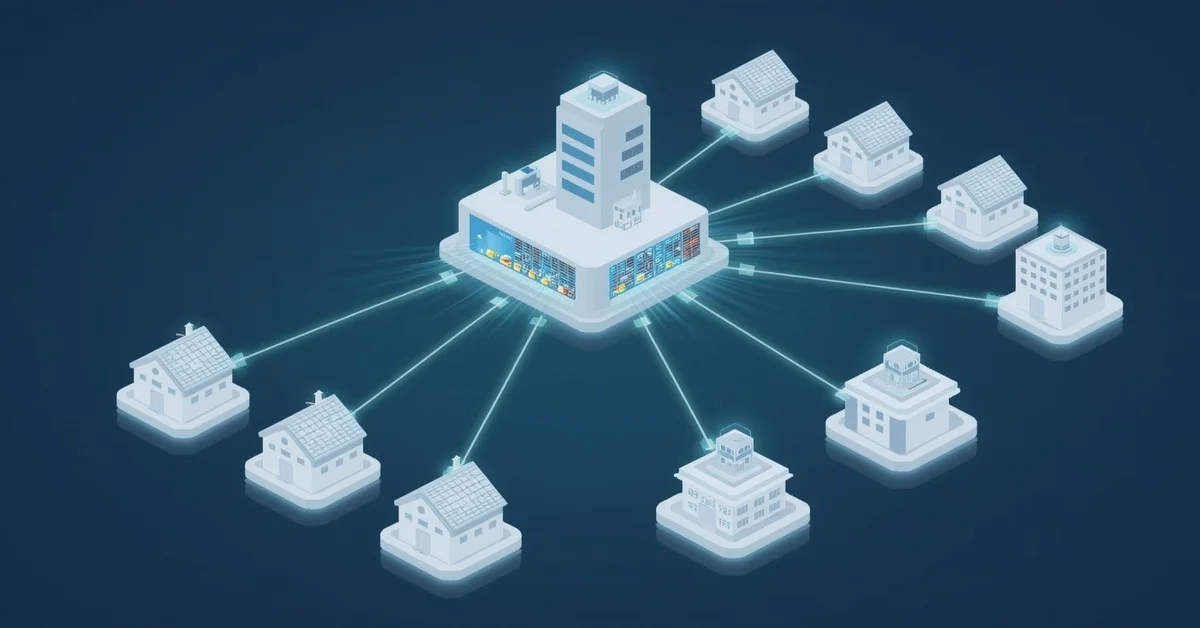In today’s world, fast internet is no longer a luxury it has become a necessity. Whether people are working from home, streaming high-definition videos, attending online classes, or managing smart devices, they all rely on a stable and high-speed internet connection. This is where Passive Optical Networks (PON) come into play. Anyone using fiber-optic internet is likely benefiting from a PON. But what exactly is a passive optical network, and how does it work? This article breaks it down in simple terms.
What is a Passive Optical Network?
A Passive Optical Network (PON) is a fiber-optic technology that delivers internet without powered equipment between the provider and user. It uses optical splitters to distribute the signal to multiple users and is commonly used in FTTH and FTTP for efficient, high-speed, and cost-effective connectivity.
Why is it Called “Passive”?
In traditional networks, you often find active elements like electronic switches or amplifiers that require electricity. In a passive optical network, the connection between the service provider’s central point (also called the Optical Line Terminal, or OLT) and your home uses no powered devices. Instead, it uses optical splitters to divide one fiber line into many, serving multiple users with a single infrastructure.
This setup is both simpler and cheaper to maintain, especially when expanding to large residential areas.
Key Components of a Passive Optical Network
A typical passive optical network comprises three primary components:
- Optical Line Terminal (OLT): This is located at the service provider’s end, usually in a central office. It controls the data going to and from users and connects to the internet backbone.
- Optical Network Unit (ONU) or Optical Network Terminal (ONT): This device resides on the user’s side, whether in a home, office, or commercial building. It receives data from the OLT and converts it into electrical signals for your router or devices.
- Optical Splitter: This is the “passive” part of the network. It takes a single optical signal from the OLT and splits it into multiple signals so it can reach many ONTs.

This structure allows a single fiber cable to serve many users, sometimes up to 64 or even 128.
How Does a Passive Optical Network Work?
Let’s look at how a PON sends and receives data.
The OLT sends data using light pulses through a fiber-optic cable. The optical signal is transmitted from the central office and passes through a passive optical splitter. The splitter then divides this light signal into multiple identical copies and sends them down separate fiber lines to each user’s ONT. Even though all users get the same data, each ONT only accepts the data meant for it, using encryption and address tagging.
How PON Handles Data from Multiple Users?
When data needs to be sent back from the user (upload), the ONT sends it back through the same path to the OLT. But since multiple users are sharing the same fiber, a method called Time Division Multiple Access (TDMA) is used to avoid collisions. This means each ONT sends data at a specific time slot, and the OLT collects it in order.
Types of Passive Optical Networks
There are multiple types of PON technologies, each with its own speed and use case. The most common ones are:
- APON (ATM PON): The earliest form of PON is now considered obsolete.
- BPON (Broadband PON): An Improved version of APON with better features.
- GPON (Gigabit PON): Most popular today; supports high download and upload speeds.
- EPON (Ethernet PON): Uses Ethernet protocols instead of ATM; common in Asia.
- XG-PON / XGS-PON: Next-generation versions with even faster speeds, up to 10 Gbps or more.

Among these, GPON is the most widely used due to its balance of cost, speed, and reliability.
Advantages of Passive Optical Networks
There are several benefits of using PON technology:
- High Speed: PONs can support gigabit-level internet, suitable for streaming, gaming, video conferencing, and more.
- Scalability: One OLT can serve many users, making it easy to expand services.
- Energy Efficiency: Since passive components don’t use electricity, the system consumes less power.
- Cost-Effective Deployment: Without powered equipment between the OLT and ONT, the infrastructure is simpler and much more cost-effective to maintain.
- Consistent and Secure Performance: Electromagnetic interference does not affect fiber optic cables, which ensures they deliver stable, secure, and interference-free data transmission.
Where Do Networks Use PONs?
PONs are not just for homes. They are used in various environments:
- Residential Broadband (FTTH/FTTP): Most common use case.
- Office Buildings: Used for connecting multiple offices in one building.
- Schools and Campuses: Support large user bases with stable internet.
- Smart Cities: Connects IoT devices, sensors, and public Wi-Fi.
- Hospitals: Ensures smooth communication and access to cloud-based systems.
Challenges of Passive Optical Networks
While PONs are powerful, they come with some limitations:
- Distance Limitation: Most PONs support up to 20 km between the OLT and ONT. Beyond this, signal quality drops.
- Shared Bandwidth: All users on the same splitter share the same bandwidth, which can affect speed during peak hours.
- Initial Setup Cost: Although operating costs are low, the upfront installation, especially of fiber, can be expensive.
The long-term advantages in reliability, speed, and lower operational costs usually outweigh the upfront investment challenges.
Future Outlook
As internet demand rises, advanced PON technologies like NG-PON2 and 25G PON are emerging to support high-speed needs. With global investments in fiber infrastructure and integration with 5G and smart grids, Passive Optical Networks are essential for delivering fast, secure, and scalable connectivity.
Conclusion
A Passive Optical Network (PON) delivers fast, reliable fiber-optic internet to homes and offices using a simple, power-free setup. As demand for high-speed internet grows, PONs will continue to play a vital role in scalable connectivity.



